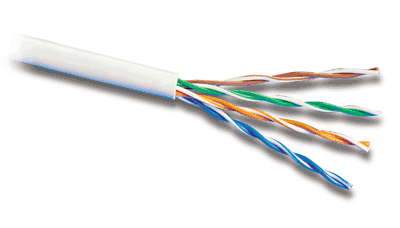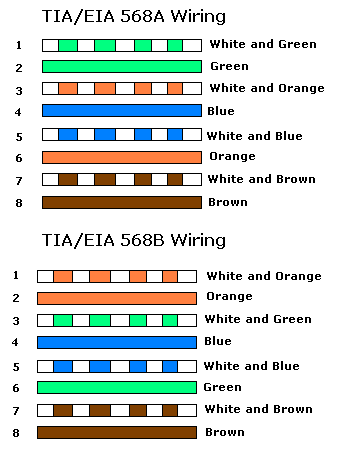 Shielded
Shielded
The shielding for a shielded twisted pair is a foil or metal mesh cladding wrapped around an insulator which contains pairs of insulated wires twisted around each other.
Shielded Twisted Pair wire (STP for short) is a copper wire medium used for transmitting digial and analog data, voice and video using electricity in environments where the signal needs to be protected against environmental noise, or against eavesdropping. STP is used for a variety of applications including phone lines, computer LAN communication, high fidelity stereo speakers and closed circuit video feeds.
All shielded twisted pair cabling should terminated at both ends. STP cabling is usually terminated at a punch block, patch panel, NID or with an RJ-11 (phone) or RJ-45 connector. Computers are most often connected using RJ-45 connectors to support four-wire ethernet, and regular analog phones are connected with RJ-11 connectors to support two-wire phone lines.
Twisted
 STP consists of pairs of insulated copper wire (typically 26 or 24 AWG) that have been twisted at a certain number of twists per unit of distance. Telephone wires (Category 2) have only a handfull of twists per meter Category 5, 5e or 6 cables have as much as 8-9 twists per inch.
The shielding is usually around the entire bundle of wires, as either a foil
or mesh, but there are variations where each pair of wires are shielded with
a foil lining.
STP consists of pairs of insulated copper wire (typically 26 or 24 AWG) that have been twisted at a certain number of twists per unit of distance. Telephone wires (Category 2) have only a handfull of twists per meter Category 5, 5e or 6 cables have as much as 8-9 twists per inch.
The shielding is usually around the entire bundle of wires, as either a foil
or mesh, but there are variations where each pair of wires are shielded with
a foil lining.
Twisting the wire prevents the signal or information from sort of leaking onto the other wires. You see, copper wire emits a magnetic field when you apply electricity to it. Magnetism and electricity are just movement of electrons--so one tends to generate the other.
Pair
 Each copper wire has an insulating jacket and is paired with a second wire with a similarly colored jacket. Each of these pairs are then twisted and the pairs are somtimes twisted around each other. All the pairs are placed together into a plastic sleeve along with ultrastrong nylon strands to allow cable installers to pull on the cabling during the installation process without unduly damaging the wire.
Each copper wire has an insulating jacket and is paired with a second wire with a similarly colored jacket. Each of these pairs are then twisted and the pairs are somtimes twisted around each other. All the pairs are placed together into a plastic sleeve along with ultrastrong nylon strands to allow cable installers to pull on the cabling during the installation process without unduly damaging the wire.
A twisted pair cable will have the following colored pairs:
- Green and White striped
- Solid Green
- Blue and White striped
- Solid Blue
- Orange and White striped
- Solid Orange
- Brown and White striped
- Solid brown.
When wires are paired in this way, the electrical connection is easier for the installer to set up a complete electrical circuit by relying on using the solid colored wire in one direction and the striped wire of the same color in the other direction.
UTP Categories
Ethernet wiring is usually Category 3, Category 5, Category 5e or Category 6, depending upon the speed of the Ethernet protocol in use. Wiring Ethernet connections is done according to a standard. Ethernet cables are colored according to this specification (TIA/EIA 568 series specifications).
Related Tutorials